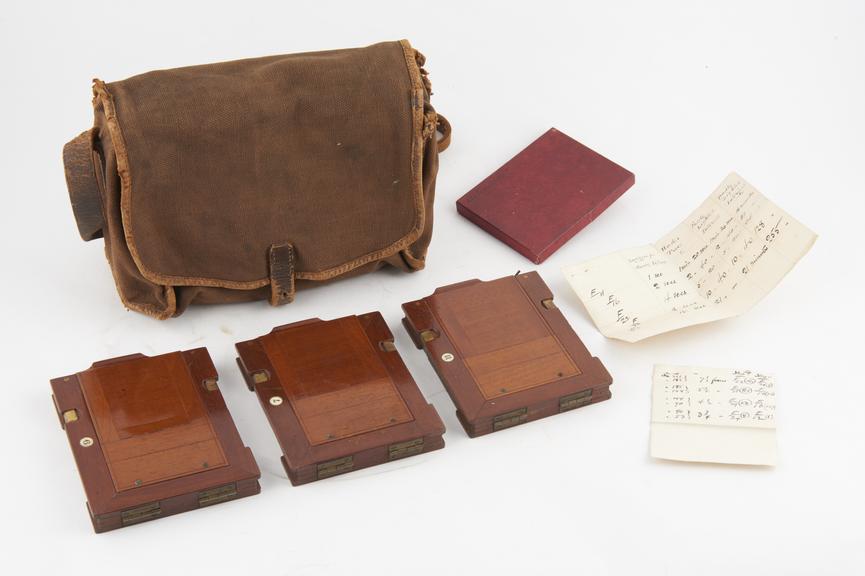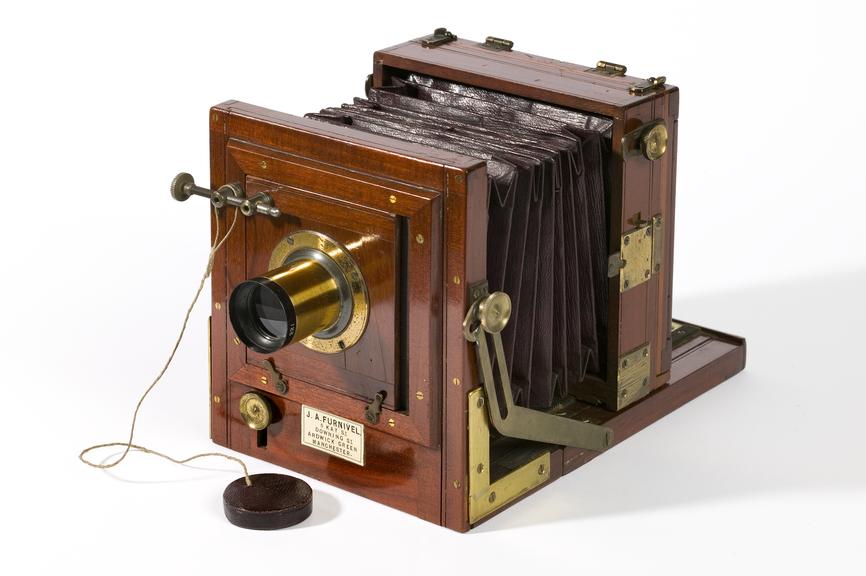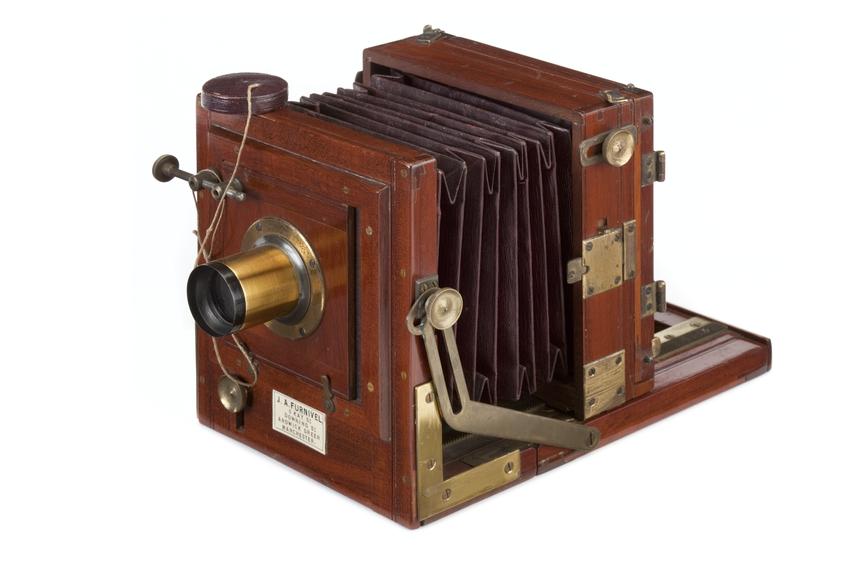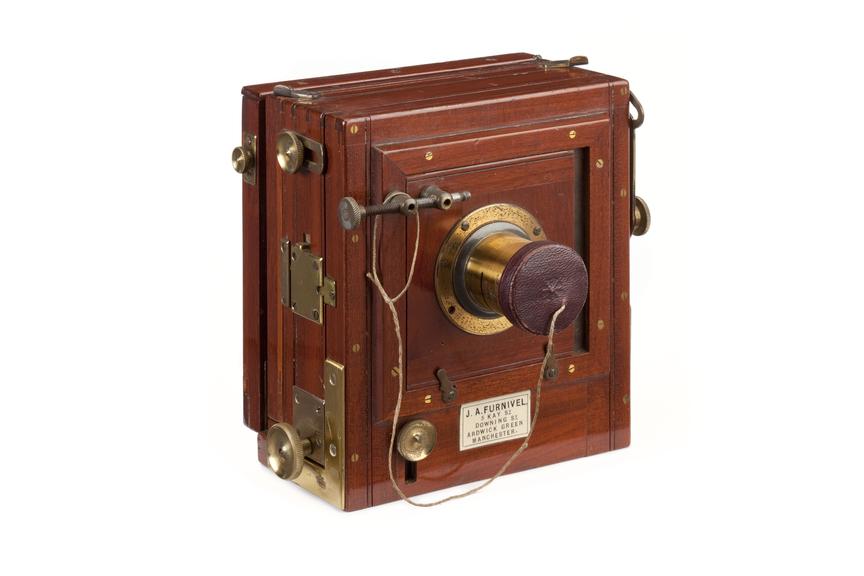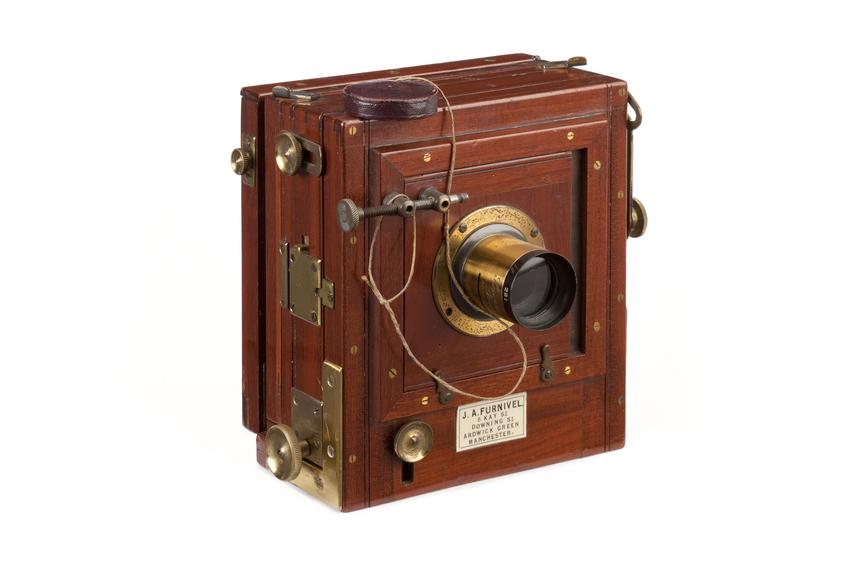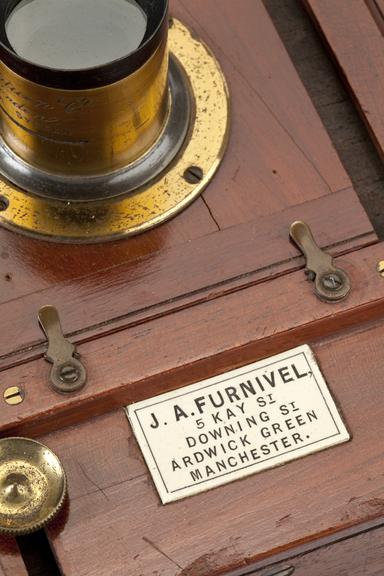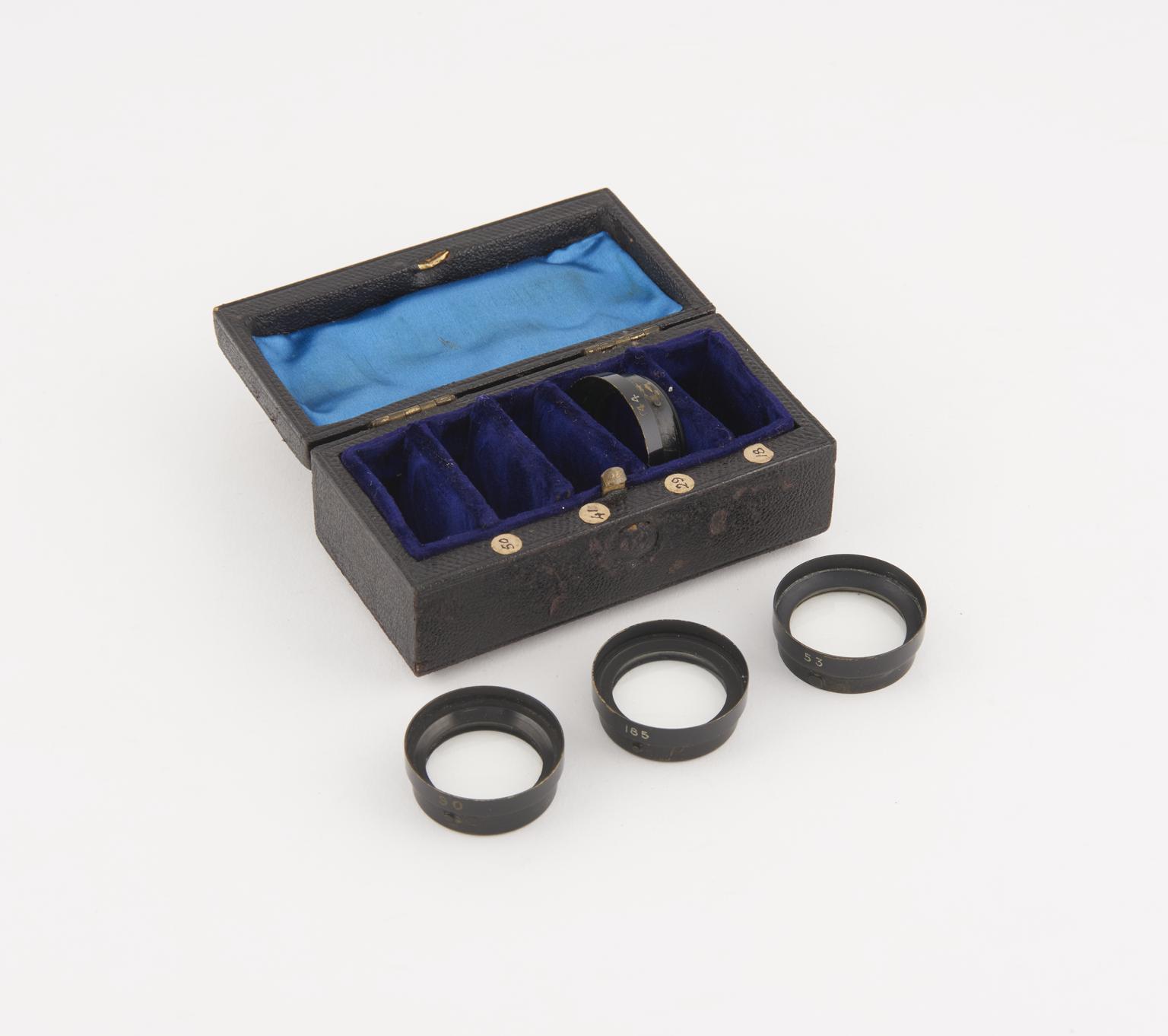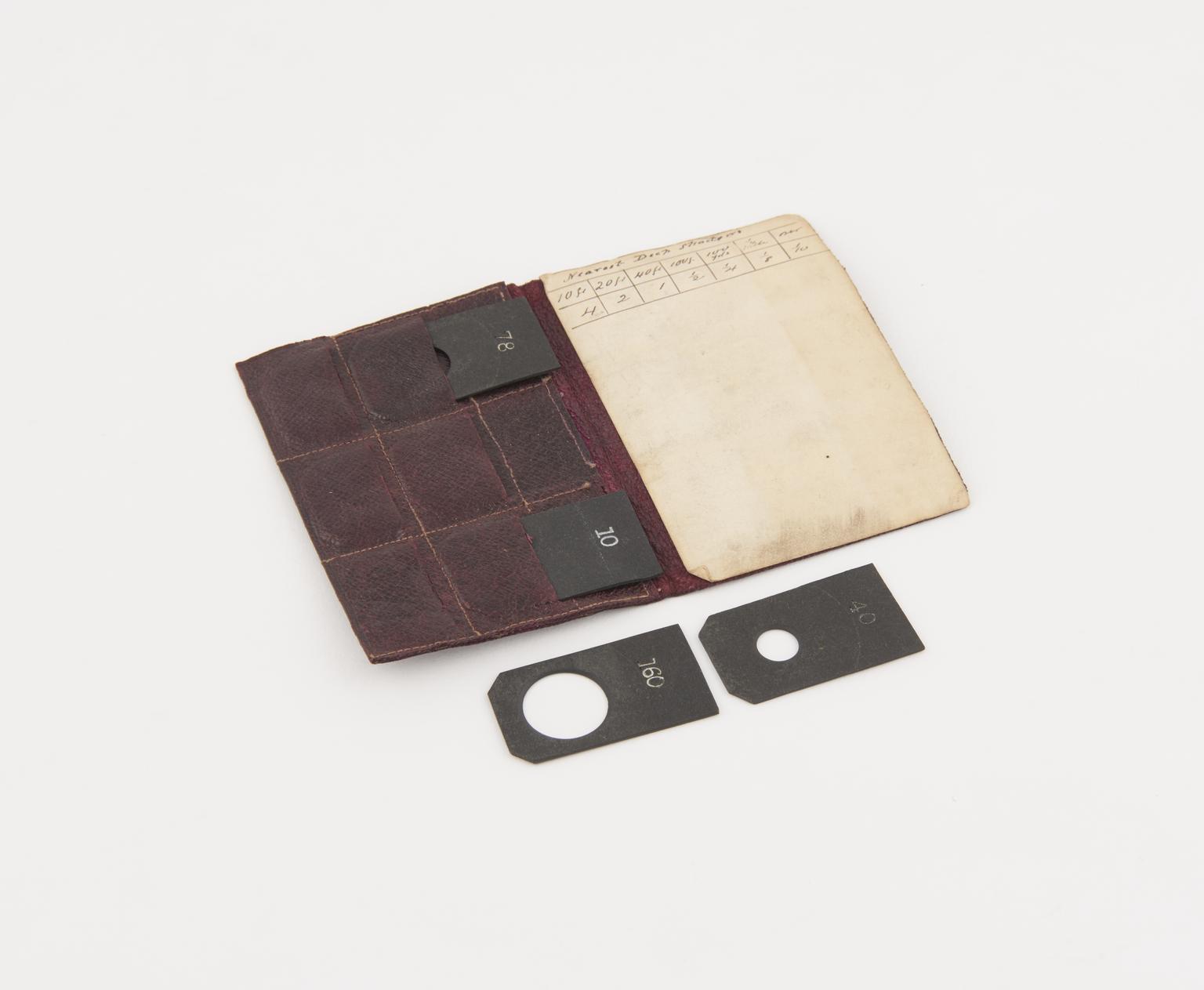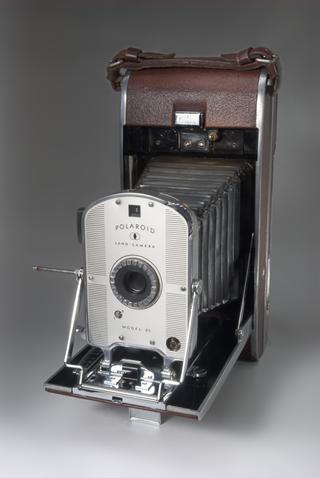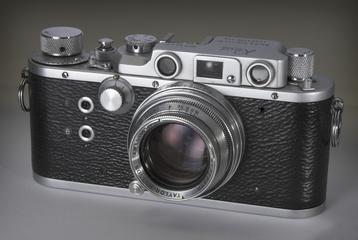Bellows Plate Camera
Bellows plate camera made by James Furnivel of Ardwick Green, Manchester, in around 1890.
More
Furnivel was in business as a maker of clock cases from 1855. In around 1857 he got into camera making while making camera cabinet work for J B Dancer, an early Manchester photographer. In 1842 the earliest known surviving photographic image of Manchester was taken by John Benjamin Dancer (1812 – 1887) from the roof of the Royal Exchange.
Mr J A Furnivel was a clock case maker by trade working in Ardwick just a mile southeast of Manchester city centre. During the mid 1800s, Manchester saw an explosion of pioneering scientific instruments and precision toolmakers. Furnivel’s skills as a clock case maker integrating precision mechanical pieces with intricate woodwork transferred well to creating cameras and camera equipment.
Furnivel gained a good reputation within the Manchester Photographic Society (founded in 1855), with one member stating, “Mr J A Furnivel’s deservedly well-known camera can only be obtained direct from the maker. We may add that the Manchester-made camera is a thoroughly sound affair, and we can recommend it, having used one for years past.” The Photographic Record. The organ of the Manchester Photographic Society. Vol 1 (1890).
Furnival was working during an exciting time in Manchester’s photographic technology development, being contemporary with James Mudd, photographer (1821-1906), J T Chapman, camera maker (1843-1907) and Thornton-Pickard, camera maker (founded 1888) and John Benjamin Dancer renowned scientific instrument maker and inventor of microphotography (1812 – 1887).


